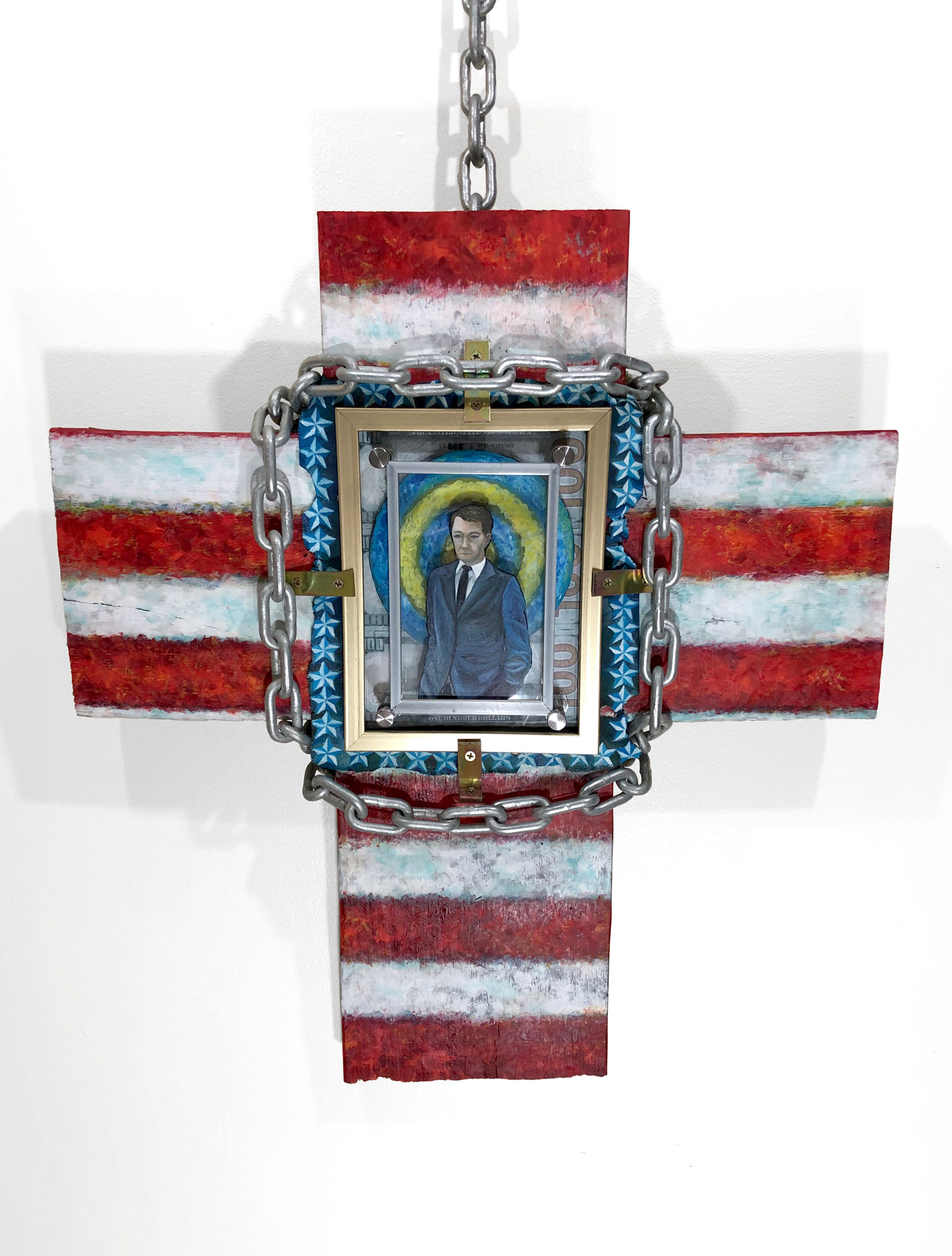In Money We Trust: Fiction
Oil, metal, currency, glass, and linen on wood
22 1/4 x 20 1/8 in
September, 2018
In the course of human history, currency has shifted from precious metals to fiat (paper). This past century has seen a further shift from physical currency to systems of credit and debt. At its core, this intangible system is based all on our trust in each other. Now, money is not gold, but trust. However, trust can be manipulated. It can be made fiction. It can be distorted. Trust can be created just as it can become destroyed.
Art has told a parallel story to economy. Painting has never been without identifications of value and worth. Just as money only has value when it flows, paintings gain value when collected and resold. In many ways, art has been as much an intangible construct as economic systems.
Fictions can be found in the space between creation and destruction.
When it comes to the fictions in the construct of art, Jasper Johns may be its symbol in the contemporary world. Through semiotic play of seen and unseen factors of life objects, Johns shows us that it is our human touch that imbues value to objects. In other words, it is through certain fictions that we create value.
Despite the rise of other powers like China, the US dollar is still believed to be the strongest and most valuable currency in the world. Painting, like paper currency, is nothing more than a symbol of worth. Without symbols of identification, money is simply inked cotton linen paper. As the creator of one of the most expensive paintings ever sold, Flag, which is also a symbol of patriotism, Jasper Johns is almost as a patron saint of belief and prayers in the name of value.
Without an artist’s name, or a demand for the work, a painting is no more than colors on a surface. Art may be a higher truth, but its value in the market is only fiction.


